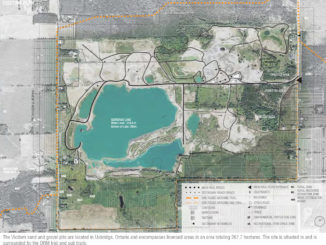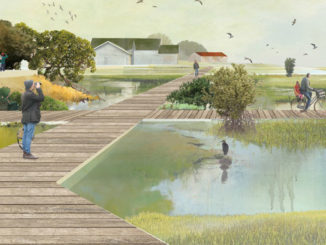Winner – Award of Excellence in the 2020 WLA Awards for the Student – Analysis & Planning category
The Constructive Destruction, rethink the issue of unexploded ordnance (UXO) in Cambodia — from a deadly threat to a potential resource for development. What if the demining of UXO is piggy-backed with local infrastructural development? Can we redesign the demining effort to shoot two birds in one stone, and mitigate other environmental issues that are also threatening post-war Cambodia?
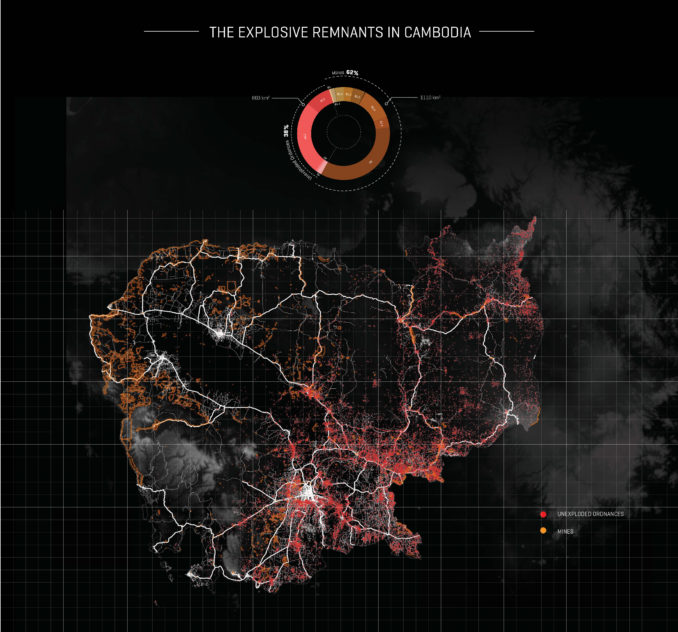
This project explores strategic ways to restore the Cambodian landscape to safe grounds while developing critical infrastructure for future development and environmental issues mitigation. The proposed interventions also create cultural landscapes and experiences that tell the unique war history of the country.
Background
Cambodia has more active buried explosives than people living above. During the Vietnam war, 2.7million tons of ordnance were dropped in Cambodia; more than half remained unexploded. The immense amount of UXO and high economic cost of removal creates an insurmountable challenge to Cambodia. Demining remains today a highly inefficient, low incentive, and poorly organized activity. Every week, 3 innocent lives are lost.
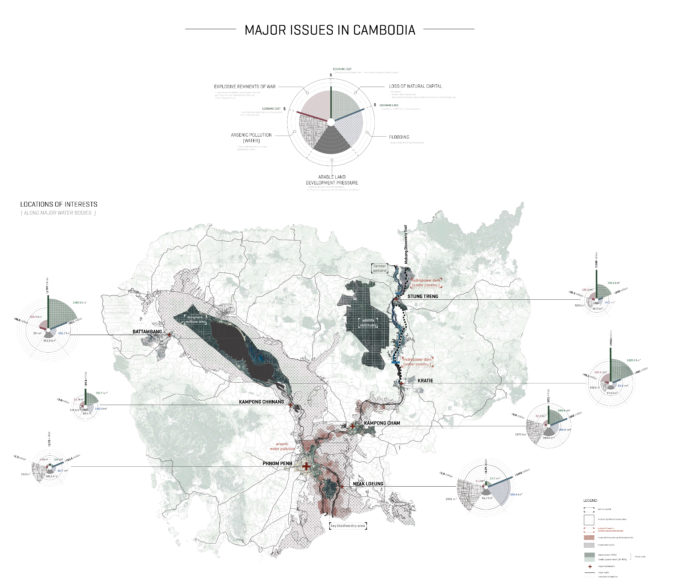
The research was inspired by the way locals repurpose the bombshells into daily commodities like canoes and house foundations, and develop bomb craters into fish farming ponds. It explores design opportunities that capture the action of demining to serve its highest potential for future development, and repurposes the bomb-scapes for productive applications.
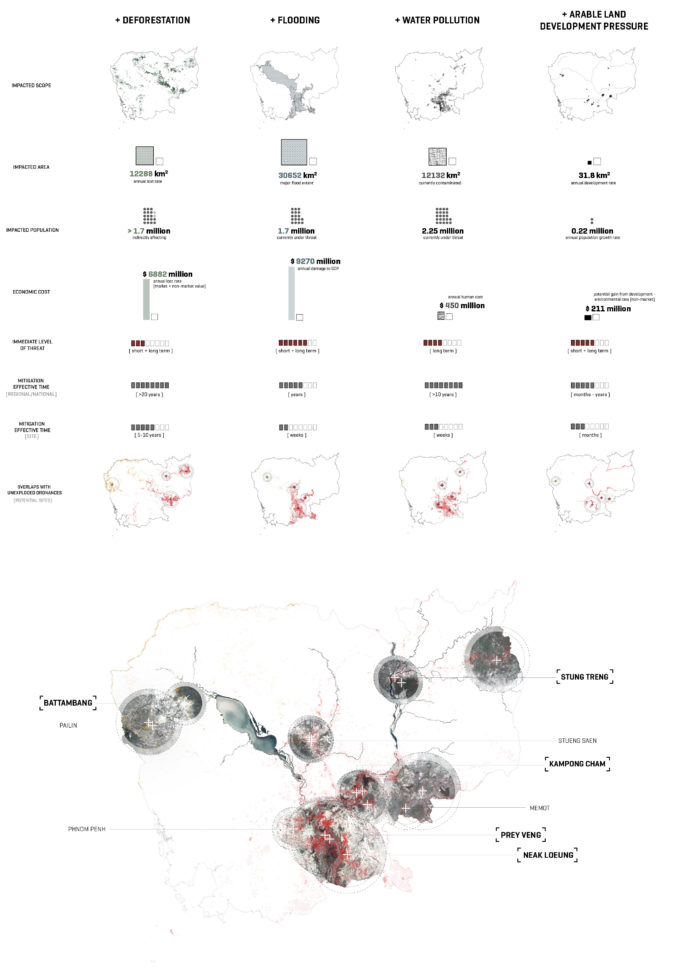
Design
The research started with the methodology of studying the types and spatial distribution of the UXO, and their relationship with other environmental issues. Issues such as deforestation, flooding, water pollution, and development pressure of arable land.
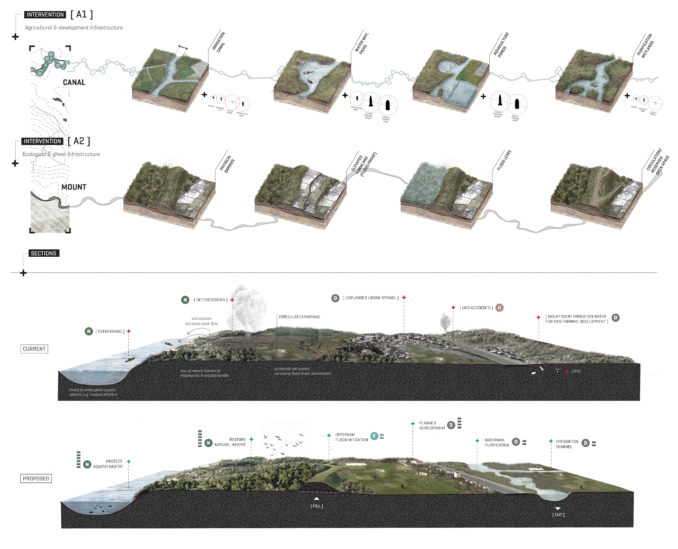
In Stung Treng, the excavated demined landscape are proposed to develop into a waterway that serves as an irrigation canal, providing irrigation water for the development of rice paddy inland, functioning as a waterway to transport crops to markets for sale, and serving as aquaculture ponds. The excavated soil from demining can be reused as fill materials for flood levees along the Mekong river.
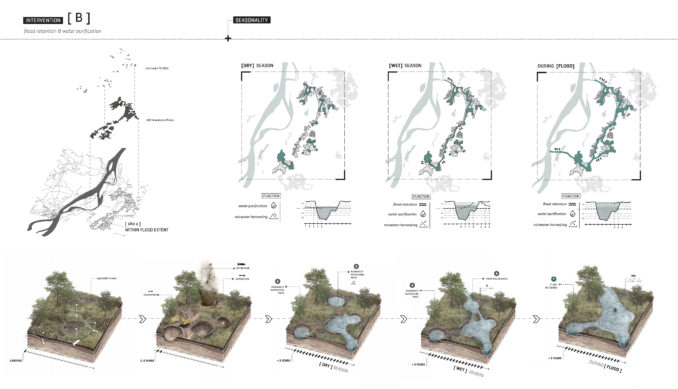
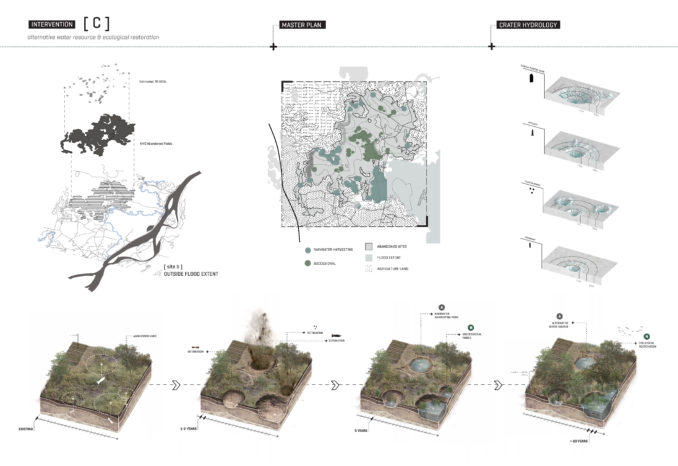
In Kampong Cham, demined craters are proposed to develop into rainwater harvesting ponds for irrigation/livestock water, and others to develop into flood diversion channels for excess river flow, mitigating the effects of flooding to the surrounding agricultural area. For craters that are outside of the flood zone, they are proposed to be preserved and grow into nature reserves, providing habitats for a new landscape ecology to thrive. Eco-tourism can be promoted, educating visitors on the impact of war and allowing a new experience to the post-war landscape.
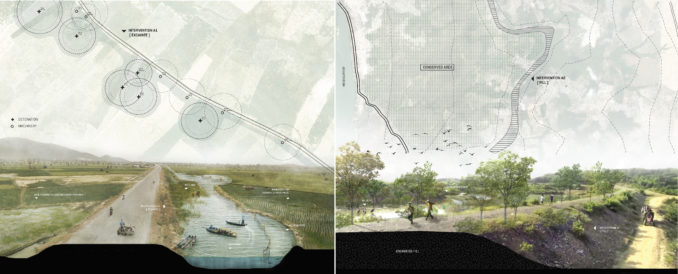
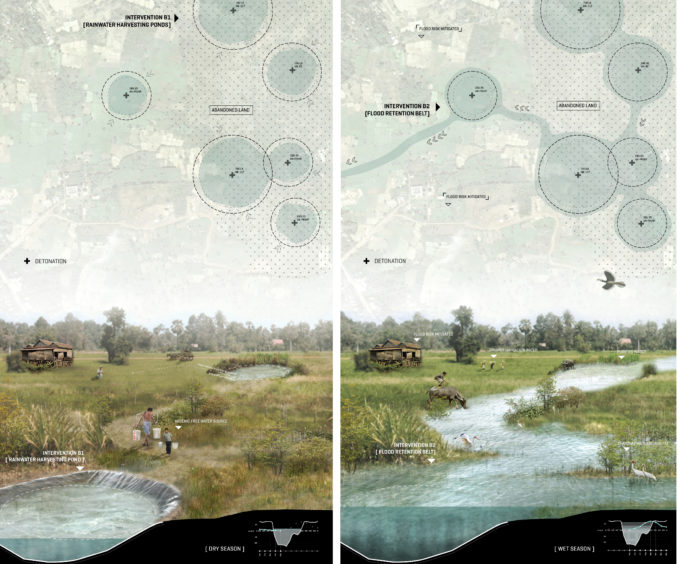
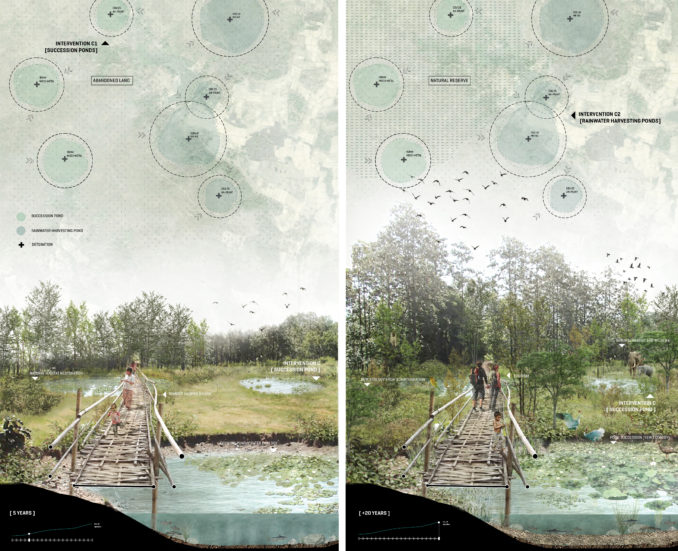
The demining of unexploded ordnance may seem insurmountable — but when demining is strategically designed to be capitalized as long-term and high-return investment, it attracts investments and provides higher incentives for demining. This results in the efficient removal of UXOs, the safety of people, and the economic recovery and prosperity in the country of Cambodia.
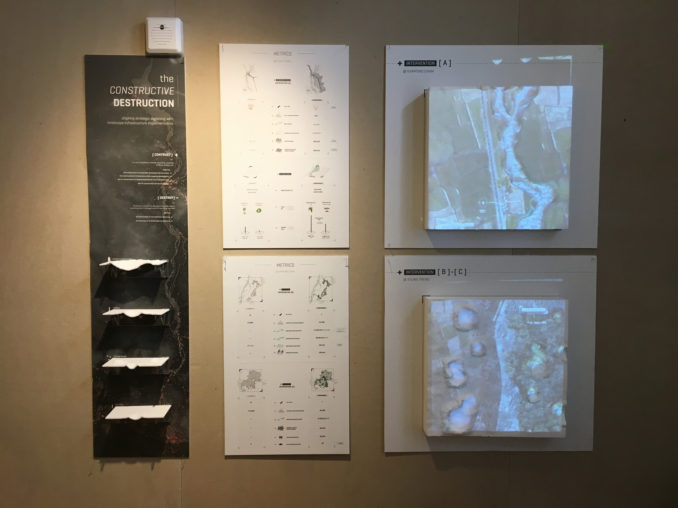
The Constructive Destruction
Project Location: Cambodia
Student: Grace Shaine Wong – University of Toronto
Advisor: Fadi Masoud

